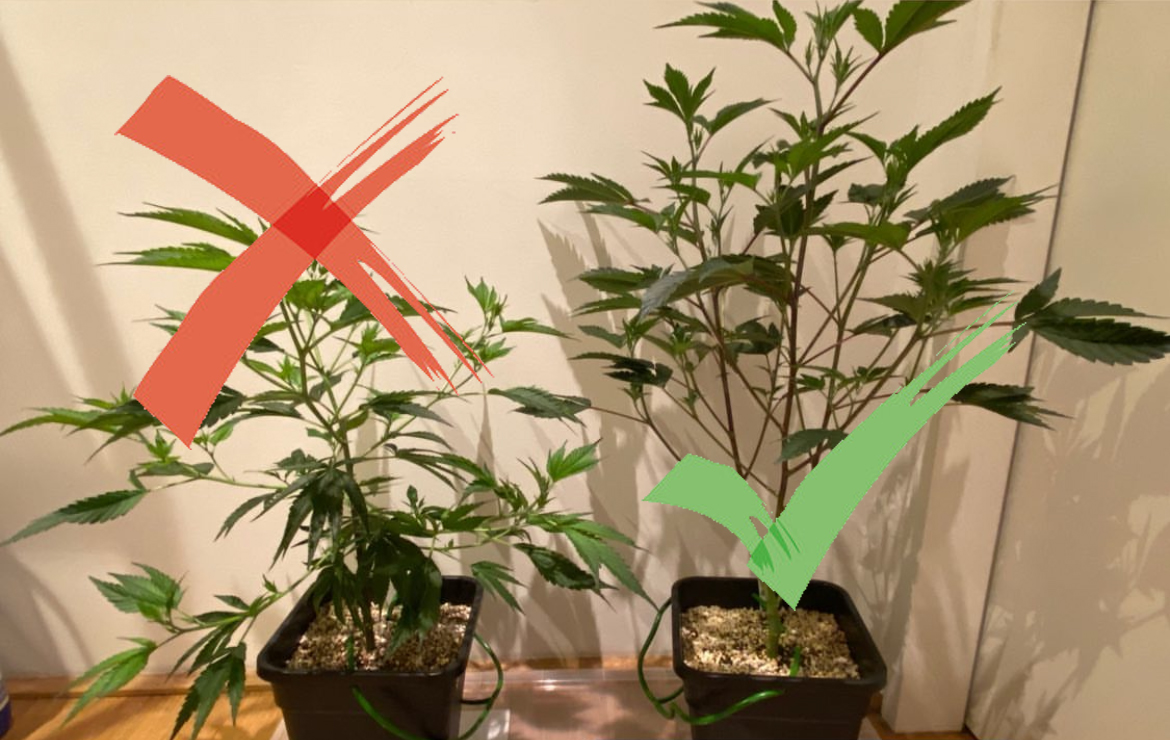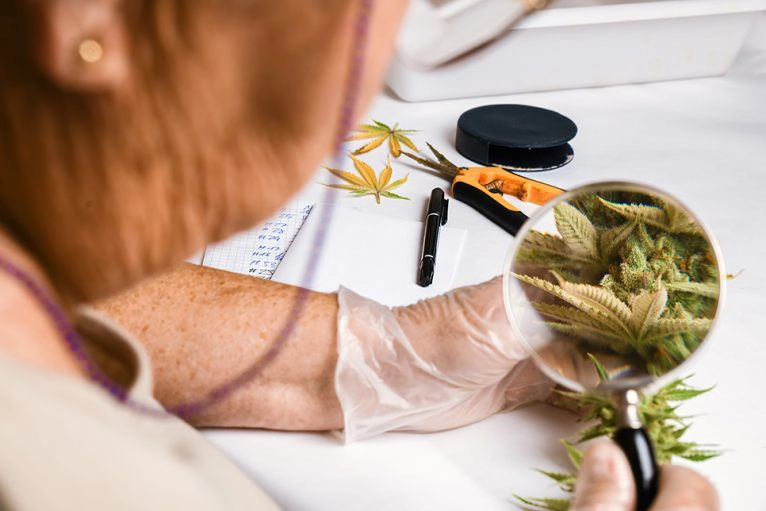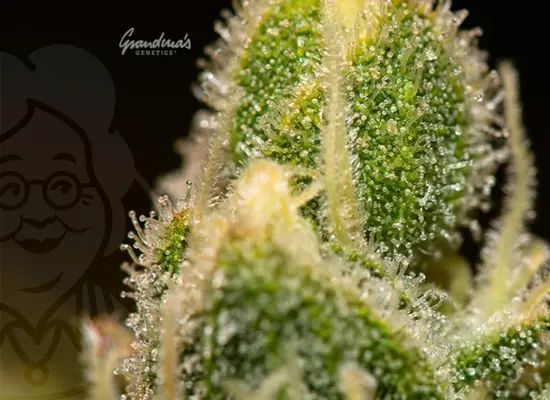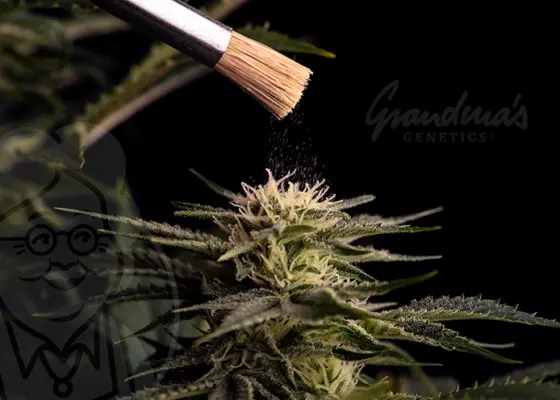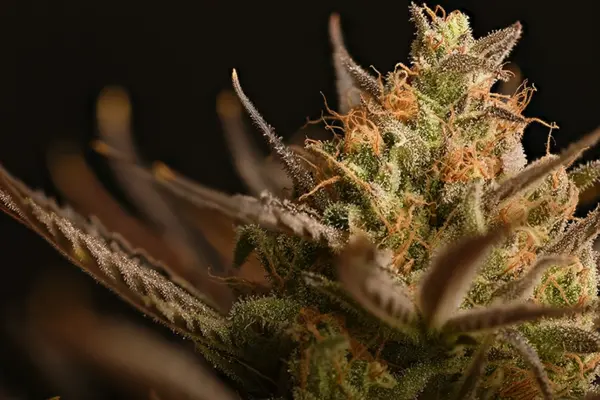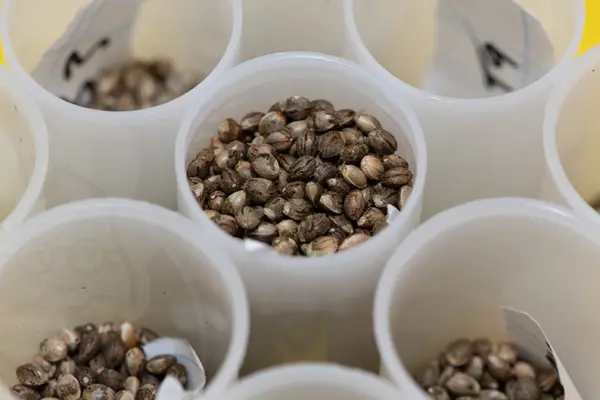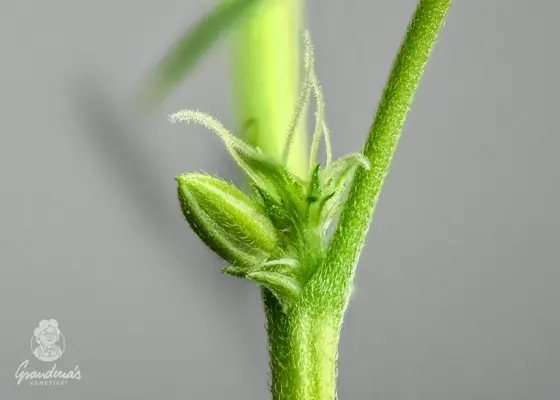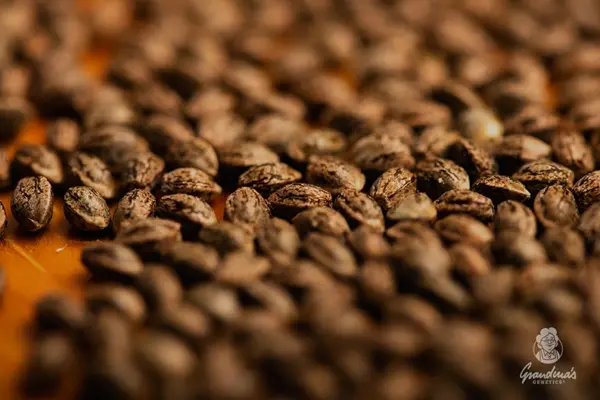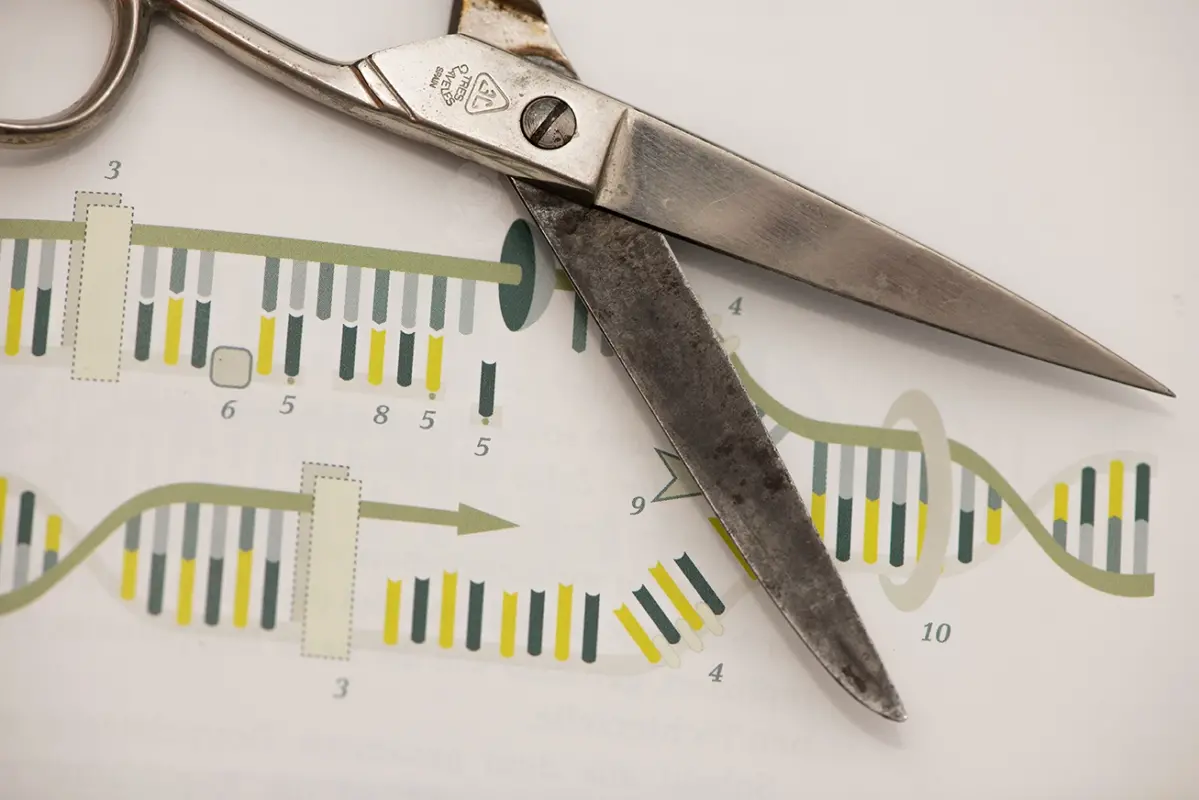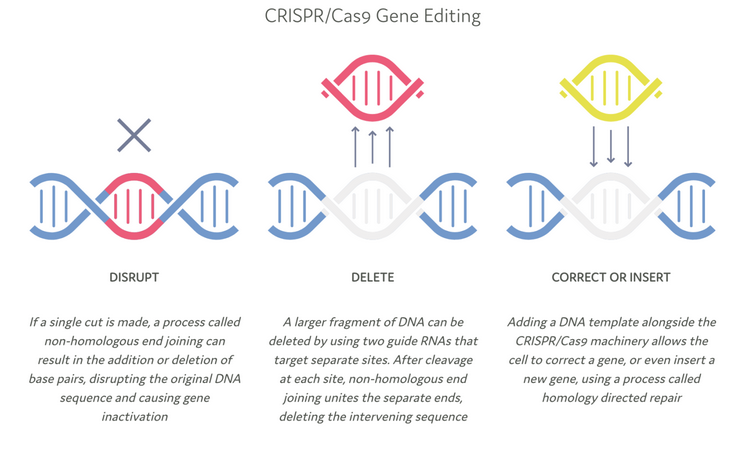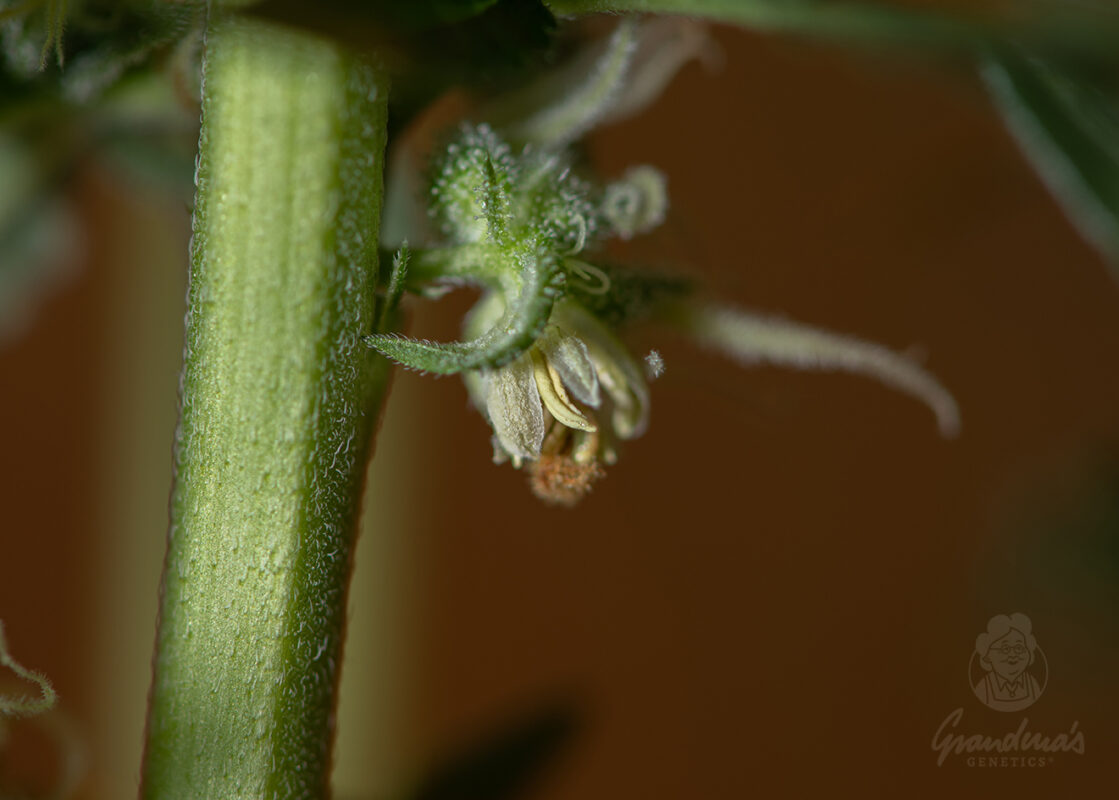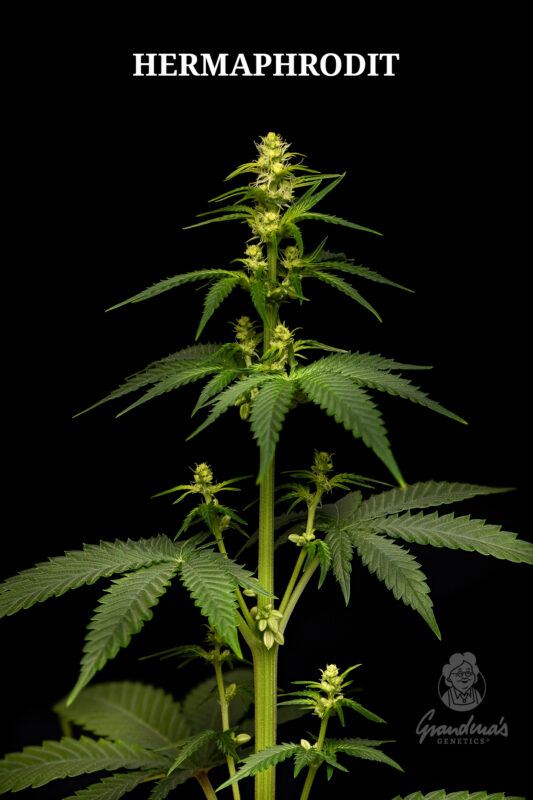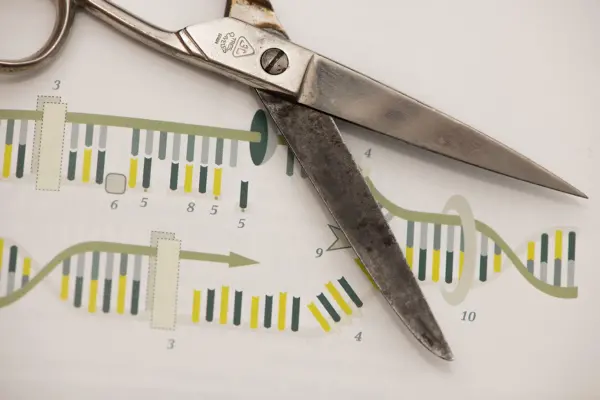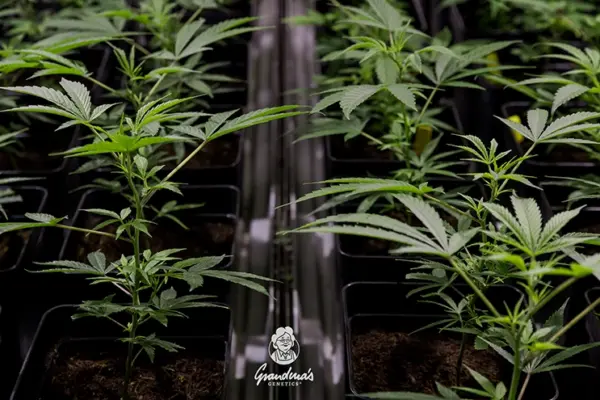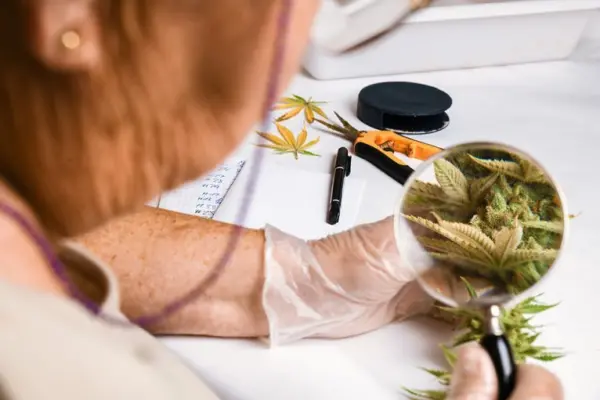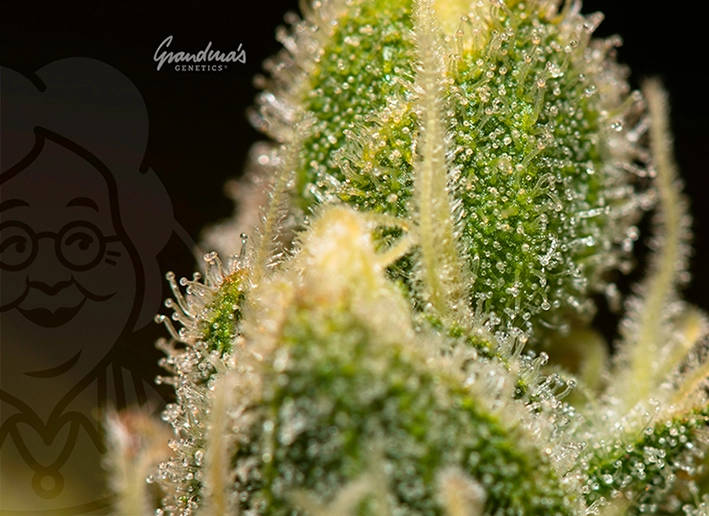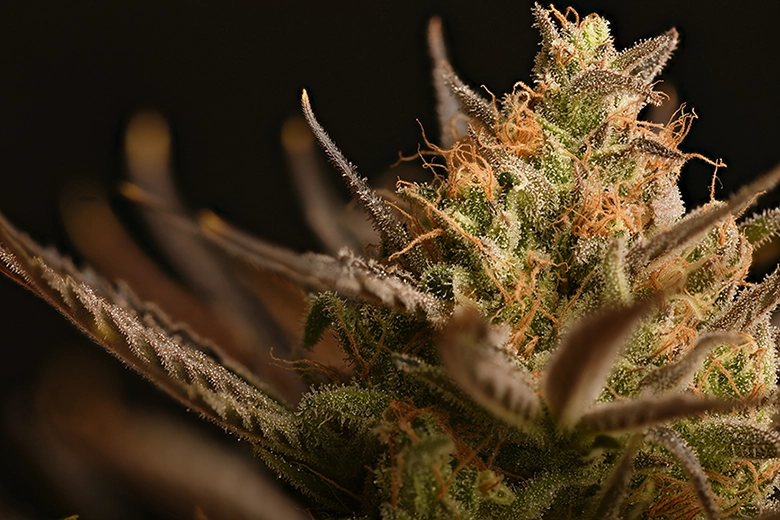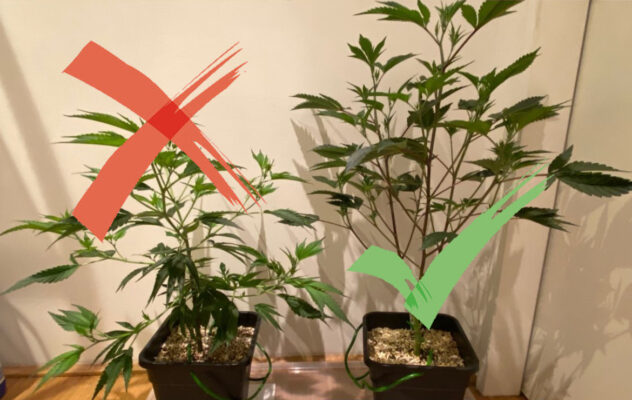When grandma used to come back from her heath walks with fresh limes from the orchard or fragrant lavender, their aromas spread throughout the house. Only later did we realize that the plants were grandma’s helpers for the mind. The scent of fresh citrus always put that warm smile on her face that we all love her for. The scent of lavender always soothed us all before bedtime, so that every night was pure relaxation.
Today, we grow cannabis strains and are thrilled by the variety of different flavors we can discover in the different strains. It is a gift of nature that cannabis combines so many different flavors in one plant. A multitude of flavors for which grandma had to go on long exploratory tours into nature back in the day. Because so many different flavors as in the cannabis plant, you look for other plant species in vain.
Thousands of terpenes make up the aroma of cannabis
The aromas of plants are called terpenes in technical jargon and are divided into 8000 different molecules. The crazy thing is that terpenes are not only olfactory in nature, but also have specific effects when inhaled, applied to the skin or eaten. We know it from lemons: Sour makes you happy. The terpene limonene is responsible for this. But let’s start with the general and then move on to the different, individual terpenes in the course of the text.
Since the endocannabinoid system was discovered in the last millennium, cannabis science has focused especially on the cannabinoid components of the plant for the time being: First THC, then eventually CBD, and today CBG, CBN, and many more. You can read more about the individual effects of the different cannabinoids in our specialist article on cannabinoids.
In short, cannabinoids essentially determine the effect of individual cannabis strains – for example, THC is mainly psychoactive, appetite enhancing and cancer fighting, while CBD has a relaxing effect in the head and muscles, helps against nerve pain and can also defeat certain types of cancer.
In the recent past, another group of secondary constituents of the cannabis plant was discovered: the terpenes. They modulate the mentioned cannabinoids in their specific mode of action and can be considered as inhibitors or enhancers of them. This circumstance makes the terpenes the actual variety differentiators. Their diversity exceeds that of the cannabinoids many times over.
Terpenes: Generic term for flavor- and effect-stimulating constituents of plants.
Terpenes, as indicated in the introduction, are not only found in cannabis plants, but give numerous flowers, fruits and other living things their characteristic scent and taste. Terpenes can even be produced synthetically in the 21st century, but that’s where our philosophy ends. Grandma would never let synthetic terpenes into her kitchen!
There are even terpenes from animal origin. In 2021, more than 8000 terpenes (hydrocarbons) and, more broadly, more than 30,000 terpenoids (hydrocarbons with functional chains) are known. Chemical separation techniques such as gas chromatography can be used to determine the terpene composition of a plant, and the results obtained can be used to determine plant species “backwards.” Each plant is known to have a certain terpene profile, and in the case of the cannabis plant, this can even be used to determine different varieties or strains!
Different varieties are known for certain terpene profiles. This is because the cannabis plant, as one of the most hybridized polyhybrid plant species in the world, now knows thousands of such terpene profiles, which differ from each other to a greater or lesser extent depending on the variety. This is because, unlike plants of basic nutrition such as cereals or potatoes, cannabis has not only been selected for maximum yield and resistance. Cannabis is in a way a luxury product and analogous to other luxury products like perfumes or power smoothies, cannabis is about the essence. About the divine, the spiritual, the healing. And what could be better suited for this than a comprehensive mix of terpenes and cannabinoids, which can only unfold its full potential through its diversity.
Terpenes, unlike cannabinoids such as THC and CBD, are not present in the plant in the double-digit percentage range, but are in the per thousand range.
A cannabis plant thus likes to contain only 0.2% of a certain terpene. Terpenes, however, are so much more effective than the known cannabinoids that they already unfold their effects in such low concentrations and also clearly shift the taste in a certain direction.
For these two reasons, cannabis breeders like Grandma’s Genetics in particular have made it their business to breed ever greater quantities of terpenes into varieties. But it’s not just quantity that counts; we also care about terpene diversity. We want to strengthen, conserve and improve existing terpene profiles. But discovering and breeding new terpene profiles is also one of our great passions.
Because at the end of the day, terpenes make the difference between a strain luring you into the couch, taking your creativity to new heights, or acting like a morning kick-start.
Incidentally, some terpenes are also cannabinoids, …
… such as the anti-inflammatory beta-caryophyllene. Cannabinoids can therefore be terpenes and terpenes can be cannabinoids. The boundaries flow into each other, as is so often the case.
Different terpenes and cannabinoids can produce different effects depending on the combination and mixing ratio. We call this observation the entourage effect. With a view to the 30,000 terpenoids and over a hundred cannabinoids, the combination possibilities can only be calculated with the help of supercomputers.
The realization of the entourage effect leads, for example, in medical CBD products in California more and more often to the fact that a small amount of THC above 1% is mixed into the CBD cream or CBD tincture, because otherwise some intended (medical) effects would be missing. It is explicitly not about the high, which would be missing, but other, more subtle effects.
Hundreds of terpenes can be found in different cannabis strains. The six most common terpenes found in cannabis are limonene, humulene, alpha-pinene, linalool, beta-caryophyllene and myrcene. A closer look at the terpenes is definitely worthwhile at this point, as the differences from terpene to terpene are sometimes very clear.
Myrcene – the “Mango terpene”
Let’s start with the terpene, which according to this research is the most abundant in cannabis strains. Myrcene is found in fragrant plants and herbs, including mango, which is famous for its myrcene content, lemongrass and thyme. Daniela Ludwig’s favorite plant, hops, also relies entirely on the pain-relieving terpene. Bay leaves, basil and cannabis round off the collection of myrcene-containing leaves, flowers and fruits.
Myrcene effect
If you like to smoke indica strains that push you into the couch, you most likely have a preference for myrcene. This is because this terpene is primarily associated with the sedative effects of cannabis. According to this source, cannabis strains with more than 0.5% myrcene (5 per mille) are said to produce the typical indica effect. Imagine that: 0.5% of the total biomass of the flowers, that would be equivalent to only 5mg in one gram! But hey: From a 5mg-THC-Edible one finally also feels an effect, and that is THC, which makes up 100mg-250mg of a gram bud and is thus consumed in significantly higher concentrations than myrcene.
Myrcene: The legend of the amplifying mango
We find the “stoner legend” of the mango, which is supposed to intensify the high after smoking a sports cigarette, funny. Even if this cannot always be reproduced in sessions that get out of hand, the myrcene effect is more pronounced, for example, in microdosing, i.e. low-dose, steady consumption. Here, additional myrcene indeed plays an important role: Because especially with small consumption units, myrcene plays out a helpful strength: Myrcene acts like a turbocharger for cannabinoids, in that the terpene shortens the time it takes for the accompanying cannabinoids to cross the blood-brain barrier. This increases the effect and makes the small dose look like a big one.
Myrcene also has an effect:
- Anti-inflammatory
- calming
- analgesic
- antibiotic
- antimutagenic (inhibits mutations, thus reduces the spread of cancerous tumors)
Contrary to the indica-exclusive assumption, myrcene is also present in sativa and hybrid cannabis strains. Sure, after all, compared to other terpenes, myrcene occurs most frequently and in the highest concentrations of all terpenes in cannabis strains. For example, myrcene is found in the sativa-dominant Green Crack, which is a nice standard sativa in the US. Sativa classic Blue Dream also contains plenty of myrcene, as does the most classic of all indicas: Northern Lights. Other characteristic myrcene varieties with high indica content: White Widow, Himalayan Gold or Pure Kush.
For an optimal interaction of medicinal and other modulatory effects of myrcene, it is worth consuming strains that contain the following cannabinoids and terpenes in addition to myrcene:
- CBD, THC (analgesic)
- CBN, THC (sedative, calming)
- CBD, CBG (inhibits mutation of cancer cells)
- Nerolidol (sedative)
Limonene
Outside of the cannabis plant, limonene is found primarily in citrus peels, rosemary, juniper, and peppermint. The distinctive terpene, which appears for example in Sour Diesel, Tangie, OG Kush or Super Lemon Haze, not only tastes uniquely and distinctly of lemon. Above all, it also evokes medicinal effects that are not to be neglected.
Medicinal effects of limonene
- Limonene has an antibacterial effect
- increases the receptivity of our skin, mucous membranes and intestinal wall for other terpenes
- Research suggests efficacy in combating the common cancers of breast, prostate and pancreatic cancer.
- relieves heartburn and gastroesophageal reflux disease (in the stomach)
Recreational effects of limonene
Lime-containing cannabis strains are considered mood-enhancing – or as grandma used to say? Sour makes merry. Limonene has an activating and motivating effect, especially in combination with the cannabinoid CBG.
- mood enhancing
- tension relieving and
- stress-reducing
Limonene is mainly found in sativa-dominant strains and can account for up to 2 percent of a plant’s biomass under the best conditions! However, this is highly dependent on the particular plant, because especially when raising cannabis plants from seed, the genetic lottery always plays an important role in what percentage of a terpene the plant actually expresses.
Optimal or constant conditions during planting can have a second major influence on the expression of terpenes, which is why special attention should be paid to this aspect when growing terpene-rich cannabis. The last two paragraphs are general tips for dealing with different cannabis strains and the expression of terpenes.
Limonene unfolds its full potential best in interaction with the following terpenes and cannabinoids:
- CBD, CBG, CBN (anti-cancer)
- CBG (antidepressant, mood elevator)
- Linalool (anxiety relieving)
Limonene, by the way, is also popular in detergents, food, perfumes and medicine, because it is not only antibacterial, smells good and creates a stunning aroma, but also very tolerable due to its low toxicity.
Humulene (α-caryophyllene)
Humulen is characterized by earthy-woody scents. Associations with OG Kush or White Widow quickly come to mind. Humulene is thus one of the classic cannabis terpenes that has its very own fans.
In Europe, but also in the USA, cannabis strains with the woody-earthy and often also herbaceous-pungent taste of Humulen are comparatively popular. White Widow, Sour Diesel, Girl Scout Cookies or Skywalker OG: The first three of these strains can be found effortlessly in many Dutch coffee shops or Spanish social clubs.
The name humulene, by the way, comes from “humulus,” the Latin name for hops. The terpene is very prominent in hops. The parallel welds hops and hemp together as members of the same plant family. Humulene is also found in basil, coriander, cloves, ginger, ginseng, sage, peppermint and basil.
Humulen works:
- Appetite reducing
- Anti-inflammatory
- Antibacterial
- Analgesic
Humulene is also used in organic farming as a natural insecticide to repel insect pests.
Other humulene-rich strains besides OG Kush and White Widow are Cheese, Super Lemon Haze & Headband. All varieties that can also reach high THC levels!
Particularly intense synergistic effects without “overwriting” important effects of humulene can be achieved by consuming cannabis strains containing the following cannabinoids and terpenes:
- CBC, CBG (displaces fungi from an organism).
- THC (blood clotting inhibitor/ helps against clumping of the blood)
- THCa, CBGa (can also be used as insecticide)
β-Caryophyllene – the “Haze Terpene”
Although β-caryophyllene has almost the same name as α-caryophyllene (=humulene), the two terpenes are quite distinct from each other. Unlike its earthy brother, β-caryophyllene adds sweet, spicy, pungent and clove scents to the earthy base. β-Caryophyllene also acts as a cannabinoid, occupying, for example, the CB2 receptors of our endocannabinoid system, which are primarily active in the immune system. The fact that β-caryophyllene acts as a cannabinoid is thanks to its comparatively complex.
Besides the cannabis plant, β-caryophyllene is particularly common in black cumin, cloves, hops, basil, oregano, black pepper, lavender or the detoxifying Copaiba oil. This is known from cosmetics and is used, for example, in creams.
Given this diversity of species in which the haze terpene occurs, it becomes clear what a complex terpene we are dealing with β-caryophyllene. This is because it is found in all these different plants and spices, but unfolds in different ways depending on what other terpenes and scents are present. We always keep the entourage effect in mind, because looking at terpenes in isolation without their interactions with other substances often points in a misleading direction.
β-Caryophyllene – hot like pepper
β-Caryophyllene is often expressed in the taste of cannabis as very spicy, sometimes even hearty. According to a study from Washington State, β-caryophyllene occurs equally in indicas, sativas and hybrids and reaches about 0.3 percent of the biomass in the majority of the examined strains, rarely values around 1 percent are reached.
One variety that contains a particularly high percentage of β-caryophyllene is the Death Star variety. Its total terpene content contains 56% percent β-caryophyllene! A sativa counterpart of the indica-heavy Death Star is the variety Candyland. But also balanced hybrids like Girl Scout Cookies, GG4 or White Widow stand for high β-caryophyllene values.
The terpene β-caryophyllene also provides the typical sweet-earthy-pungent, almost acrid smell in many Haze genetics.
The enormous medicinal potential of β-caryophyllene results from its function as a cannabinoid. By occupying CB2 receptors, β-caryophyllene increases the activation of immune system actions. CB2 receptors are found throughout tissues and have the special ability to increase their number in the brain after injury or illness. Internal inflammation can thus be stopped more quickly and the risk of brain damage is reduced. In addition, the perceived pain is lower when CB2 receptors are occupied than when the corresponding receptors are not occupied. As grandma used to say: Give nature a chance when treating your aches and pains.
Furthermore, β-caryophyllene has an effect:
- Pain-relieving
- Anti-inflammatory
- Prevents many diseases through enhanced immune activity
- Blood thinning/ counteracts clots
- Prevents (epileptic) seizures or reduces their occurrence
- May reduce required morphine doses
- Probably prevents Alzheimer’s disease, as this is associated with inflammation in the brain and resulting deposits, against which β-caryophyllene helps.
α-Pinene
Imagine for a moment that you’re standing in a Mediterranean coastal forest. Or in the middle of the giant redwoods or in Yosemite National Park. Then you have the eerily intense smell of the needle-scented terpene right in your head. The α-pine scent lingers in the air with a certain heaviness, yet remains pleasantly sweet with a hint of pungency. Pine – a fragrance that stands on its own. It can, of course, be enjoyed here in Europe in many places, for example, Corsica, France, Italy, Sardinia, Mallorca, Spain, and everywhere else where there is a maritime to subtropical climate and the corresponding conifers.
Apart from cannabis and conifers, we also find the terpene α-pinene in other plants. These include rosemary, dill, basil, orange peel and parsley. Fun fact: Turpentine oil, used in the production of sealing lacquers, also consists of up to 60% α-pinene!
α-Pinene is accompanied by a particular diversity, because depending on the arrangement of the individual elements of the α-Pinene molecule, different α-Pinene are formed: one variant occurs predominantly on the American continent ((+)-α-Pinene), the other predominantly in Europe ((-)-α-Pinene).
α-Pinene, like the psychoactive THC, serves as a defense mechanism against natural enemies for the plants in which it is contained and, like THC, is found in the trichomes or resin heads of the flower.
α-Pinene acts:
- Anti-inflammatory
- helps against THC-related (short-term) memory loss
- Increases own attention
- bronchodilator (helpful for asthma problems)
A prime example of α-pinene-containing strains, according to Leafly.com, is the popular Jack Herer strain, which was named after the legalization activist of the same name. It puts people in a good mood, improves concentration and focus, and increases creativity.
But also the prominent Sativa representative Blue Dream, which is mainly known for Blueberry notes, has a respectable α-pinene content! At Leafly.com, the effects of Jack Herer and Blue Dream are also characterized almost identically, in which α-pinene certainly also holds a not entirely insignificant share.
Besides these classics, α-pinene is also found in Super Silver Haze, Arjan’s Haze or Trainwreck.
The effects of pinene are particularly well displayed in strains that also contain the following cannabinoids and terpenes:
- CBD (anti-inflammatory)
- THC (dilates the bronchi, helpful against asthma)
- CBD (improves the performance of THC-related poorer running [short-term] memory)
- CBN, CBG (Antibacterial)
Linalool
Finally, with linalool, we look again at a very well-known terpene – think of endless lavender fields in the French Provence! A scent that most people associate with positive associations. But associations with calming and good sleep also come to mind when thinking about linalool, because it clearly has a sedative effect. Grandma already knew why a bunch of lavender always hung in the bedroom.
The unmistakable, fresh-spicy taste of lavender stands for itself and makes itself daily not only in many cozy living rooms as an essential oil in the fragrance lamp.
Also by the one or other joint many rooms are aromatized in these hours with the beguiling, calming terpene. Linalool is not only found in lavender, lemon, laurel, rosewood and birch, but also in Skywalker OG, Headband, Lavender and Chem Dogg.
Linalool, as one of the less represented terpenes across all cannabis strains, has a high medicinal potential. For the recreational user, it should be said that linalool has quite a relaxing effect. It is hardly surprising that primarily indica varieties have comparatively high linalool values.
In medical indications, linalool is expected to have the following effects:
- sleep-inducing
- stress relieving
- antidepressiv
- anxiety-relieving
- analgesic
- antispasmodic
- soothing
Linalool, which gives lavender its characteristic scent, is found in a comparatively large number of plants. Thus, one does not necessarily have to rely on cannabis for sleep disorders, but can also consume coriander, nutmeg, hops, ginger, savory, cinnamon, basil, marjoram, thyme, oregano, black pepper and many other spice plants to benefit from the many valuable effects of linalool.
Particularly intense synergistic effects without “overwriting” special effects of linalool can be achieved when consuming cannabis strains with the following cannabinoids and terpenes:
- CBG (also anxiety-relieving)
- CBN, THC (sedative)
- CBD (analgesic)
- Limonene (anxiety relieving)
A vaporizer can be used to selectively vaporize and “not vaporize” terpenes
As we know at the latest at the end of this article, terpenes have a modulating effect on other cannabinoids and terpenes. We also know that different terpenes and cannabinoids only vaporize at a certain temperature. Thus, by setting different temperatures in the vaporizer, one can precisely adjust which terpenes are vaporized from the flowers and which remain in the plant material. Of course, the principle only works to a limited extent, because if you want to enjoy a terpene in isolation, which evaporates at very high temperatures, you would have to waste the terpenes evaporating below this temperature.
Philosophically, however, you can also increase the temperature throughout the day with the same charge in the vaporizer head. So you vaporize the more invigorating terpenes and cannabinoids at the beginning of the day and the more sedating ones in the evening. Of course, terpenes and cannabinoids can’t be categorized in such a general way. However, this strategy works quite well in practice. THC-V, a cannabinoid that only vaporizes at 225 °C, for example, makes you very tired, as does linalool, which vaporizes at 197 °C. Invigorating terpenes like limonene and beta-caryophyllene, on the other hand, vaporize at a much lower 176 °C. So if you start the day with low temperatures, you’re more likely to get invigorating effects, and with high temperatures in the evening, you can let the same head sing you to sleep.
Here is a brief overview of the temperature at which the terpenes evaporate:
- α-Pinene – 155 °C
- Myrcene – 167 °C
- Limonene – 176 °C
- β-Caryophyllene – 176 °C
- Humulen – 197 °C
- Linalool – 198 °C




